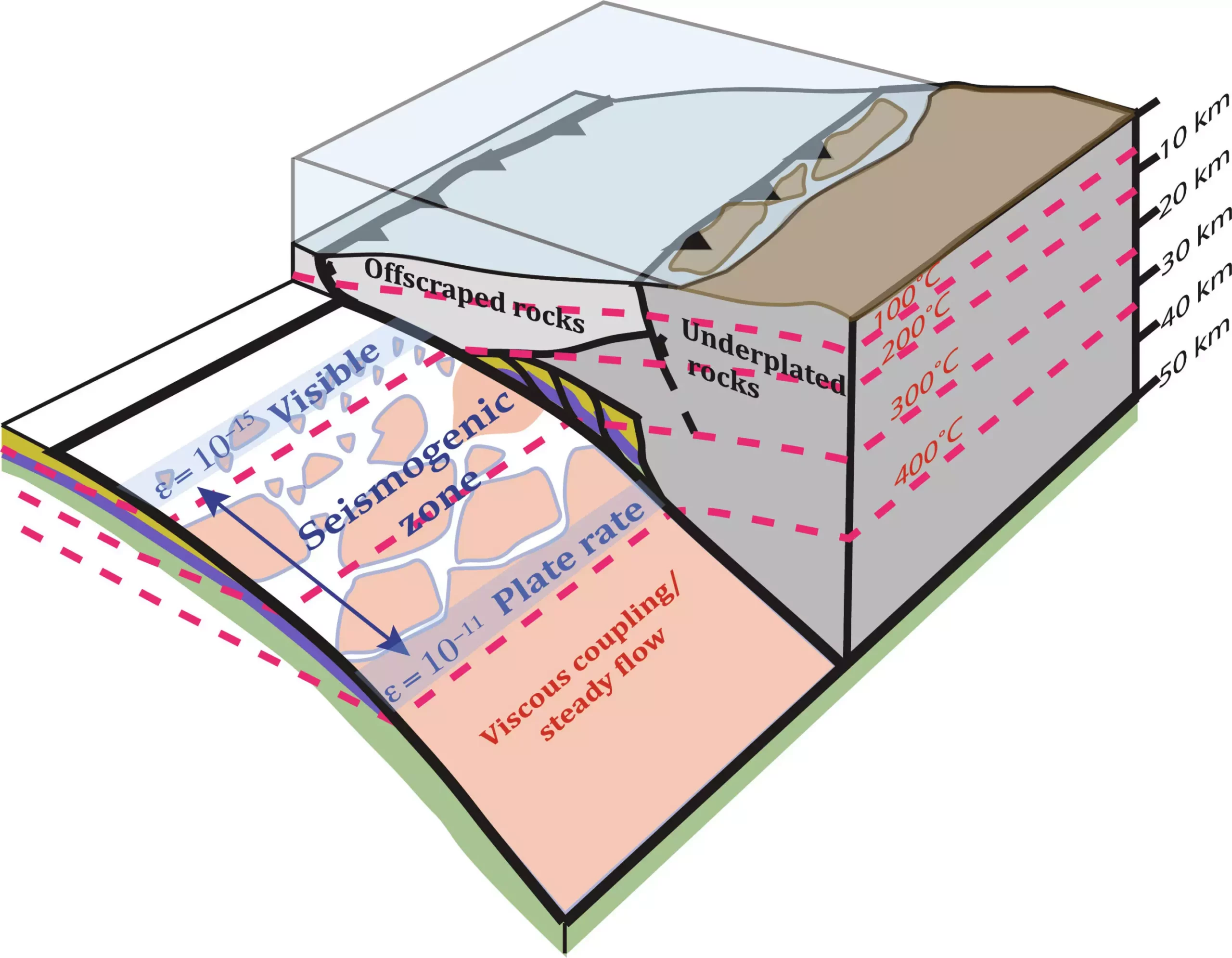Scientists from Penn State and Brown University have discovered that rocks once buried in ancient subduction zones hold vital clues for better predictions of how these zones behave between major earthquakes. This groundbreaking research has led to the development of a new model that can more accurately predict pressure solution activity in subduction zones. Published in the journal Science Advances, this study sheds light on the deformation and movement of tectonic plates, ultimately leading to a deeper understanding of earthquake occurrence.
In subduction zones, where tectonic plates collide and one plate slides beneath the other, pressure solution plays a crucial role in shaping the Earth’s crust. Pressure solution occurs when rocks are subjected to immense pressure, causing grains within the rocks to dissolve at their boundaries. These dissolved materials then move to cracks in the rocks and precipitate, leading to deformation and changes in shape. Drawing an analogy to ice skating, Donald Fisher, the corresponding author and professor of geosciences at Penn State, explains, “It’s like when you go ice skating—the blade on the surface ends up melting the ice, which allows you to glide along” [source]. This process of pressure solution significantly influences the sliding of tectonic plates and can have a profound impact on earthquake occurrence.
The world’s most powerful earthquakes take place in subduction zones, making it crucial to understand the processes involved in these zones. When tectonic plates become stuck together, stress gradually builds up in the Earth’s crust, similar to stretching a rubber band. Eventually, the accumulated stress overcomes the friction holding the plates together, resulting in an earthquake, much like a snapping rubber band. Fisher emphasizes, “We’ve shown that pressure solution is a fundamental process during the interseismic period in subduction zones…[it] can really affect the amount of elastic strain that accumulates in different parts of the seismogenic zone” [source]. By unraveling the mysteries of pressure solution, scientists can gain valuable insights into the build-up of stress and strain during the quiet periods between major earthquakes.
Studying pressure solution in the laboratory poses significant challenges, as it occurs gradually over thousands to millions of years. To overcome this hurdle, the research team turned to rocks that have experienced tectonic pressures in the past and have been brought to the surface through geological processes. These rocks exhibit microscopic shears caused by strain, which provide crucial evidence for pressure solution. By examining these rocks and their textures, scientists can gain insights into the rate and mechanisms of pressure solution.
Building upon previous studies that linked stress and strain rate, the research team led by Fisher and Greg Hirth, professor at Brown University, developed a comprehensive model that considers additional factors such as grain size and solubility. By parameterizing solubility as a function of temperature and pressure, the team could accurately calculate the strain rate based on various conditions. Fisher highlights, “So now we can plug in numbers—different grain sizes, different temperatures, different pressures—and get the strain rate out of that” [source]. This detailed model provides valuable insights into the distribution of strain within the seismogenic layer, which encompasses the depths where most earthquakes occur.
The researchers applied their model to the Cascadia Subduction Zone, which spans from northern California to Canada and includes major cities such as Portland, Seattle, and Vancouver. This active fault zone has been extensively studied, allowing for a thorough examination of the relationship between temperature, strain, and earthquake activity. By comparing the results from their model with satellite observations of crustal movements, the scientists confirmed the accuracy and applicability of their findings. Fisher highlights, “Cascadia is a great example because it’s late in the interseismic period—it’s been 300 years since the last major earthquake” [source]. Understanding strain patterns in such regions is crucial for assessing earthquake risk and enhancing preparedness measures.
The discovery of pressure solution as a fundamental process in subduction zones offers a significant breakthrough in earthquake prediction. By studying ancient rocks that have experienced pressure solution, scientists can gain valuable insight into the deformation and movement of tectonic plates. Additionally, the development of a detailed model that considers various factors, including grain size and solubility, allows for more accurate predictions of strain rate and earthquake occurrence. The application of this model to real-world scenarios, such as the Cascadia Subduction Zone, demonstrates its practicality. As our understanding of subduction zones deepens, we move closer to mitigating the devastating impact of earthquakes and safeguarding vulnerable regions.


Leave a Reply